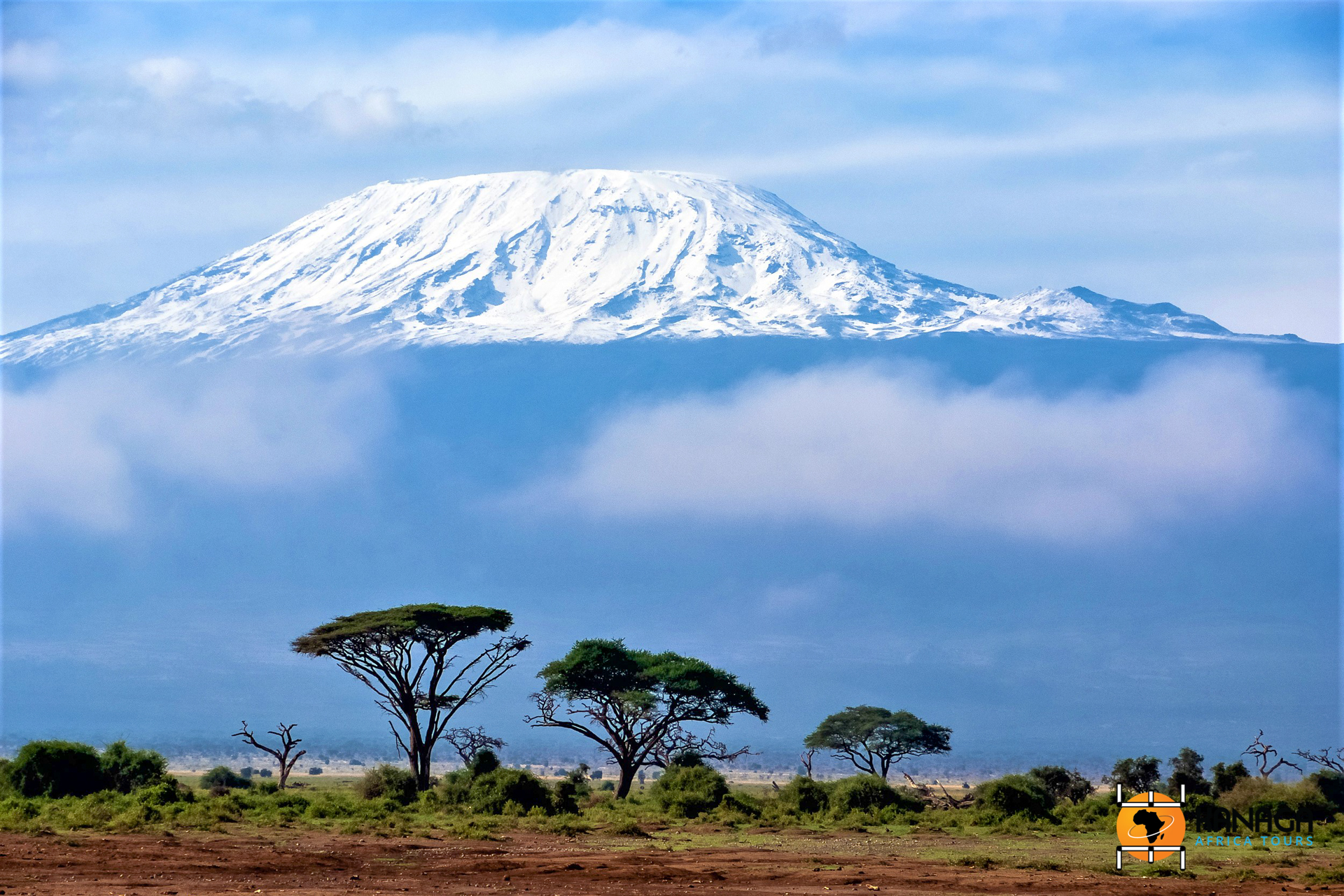The mythical Kilimanjaro that reaches an altitude of 5,895 metres above sea level, to be conquered with a challenging trek. A Tanzania beyond the clouds, the roof of Africa, a lot of willpower and a pinch of training that will be amply rewarded by unique emotions and sensations, from the top of Uhuru peak, with its magical and boundless views.
Kilimanjaro, a UNESCO World Heritage Site, is an ancient dormant volcano that offers some of the most astonishing landscapes and views in the world. Its imposing conical shape, towering in isolation amidst the boundless lands and surrounding savannahs, offers a wide view, in the extraordinary spectacle of its regular silhouette, even from great distances. It’s a giant in the heart of wildest Africa.
Most of the treks start from Moshi, a tidy, clean town at an altitude of 1,800 metres, particularly on one of the most popular routes because it is the most accessible and served by shelters where you can base yourself for the night, the Marangu Route. It will be a constant ascent for 5 days, between paths that are easy to follow in appearance, because the real “opponent” in the ascent of Kilimanjaro is the altitude and not the route or the distance itself.
Crossing the various climatic zones in intermediate stages and the surprising variation of vegetation that changes according to altitude, progressively thinning out to the so-called “mountain desert” at high altitude, there is a small intermediate descent at 3,800 metres at the halfway point, after passing them on the day of the third stage at Zebra Rock, a technical “about-face” that allows you to acclimatise before the final ascent, in two stages, to the almost 6,000 metres of the Uhuru crater.
A multi-faceted experience, with a thousand emotions, linked to the challenge of the undertaking and the incredible variety of natural landscapes, panoramas and climates, all in one trip. You cross wetlands and drylands, warm or temperate climate zones and polar frosts, you undress under the warm rays of the sun further downstream, or protect yourself with multiple layers from the cold or a sudden downpour. You can admire rainforests inhabited by monkeys and leopards, scrublands, grasslands and heaths of groundsel, ragwort and lobelias, and contemplate the thrilling desolation of the high-altitude desert, finally enveloped in the perennial frost of glacier and snow, dominating the world from dizzying heights above the clouds, and below, as far as the eye can see, the savannah, the wild animals, Africa par excellence.
Less popular with international travellers, but equally stimulating for the five senses, is the trek to the Mount Meru peaks, at an altitude of 4,566 metres, amidst the splendid ecosystems of Arusha National Park. This not entirely inactive volcano, which also made its voice heard during the first half of the 20th century, opens out to the east on an imposing sculpture of ancient lava, forming a horseshoe-shaped lunar crater with buttresses that reach 2,000 metres in height. A natural spectacle, an enchanting and evocative landscape, which can be explored by means of accessible paths within the reach of everyone, which, unlike trekking on Kilimanjaro, do not require any particular preparation, if not good physical fitness. Here too, the vegetation and scenery vary according to altitude, in a full immersion of about 4 days among luxuriant forests, heaths and prairies of alpine inflorescences, until you lose yourself in the boundless desolation at altitude, touching the clouds.







